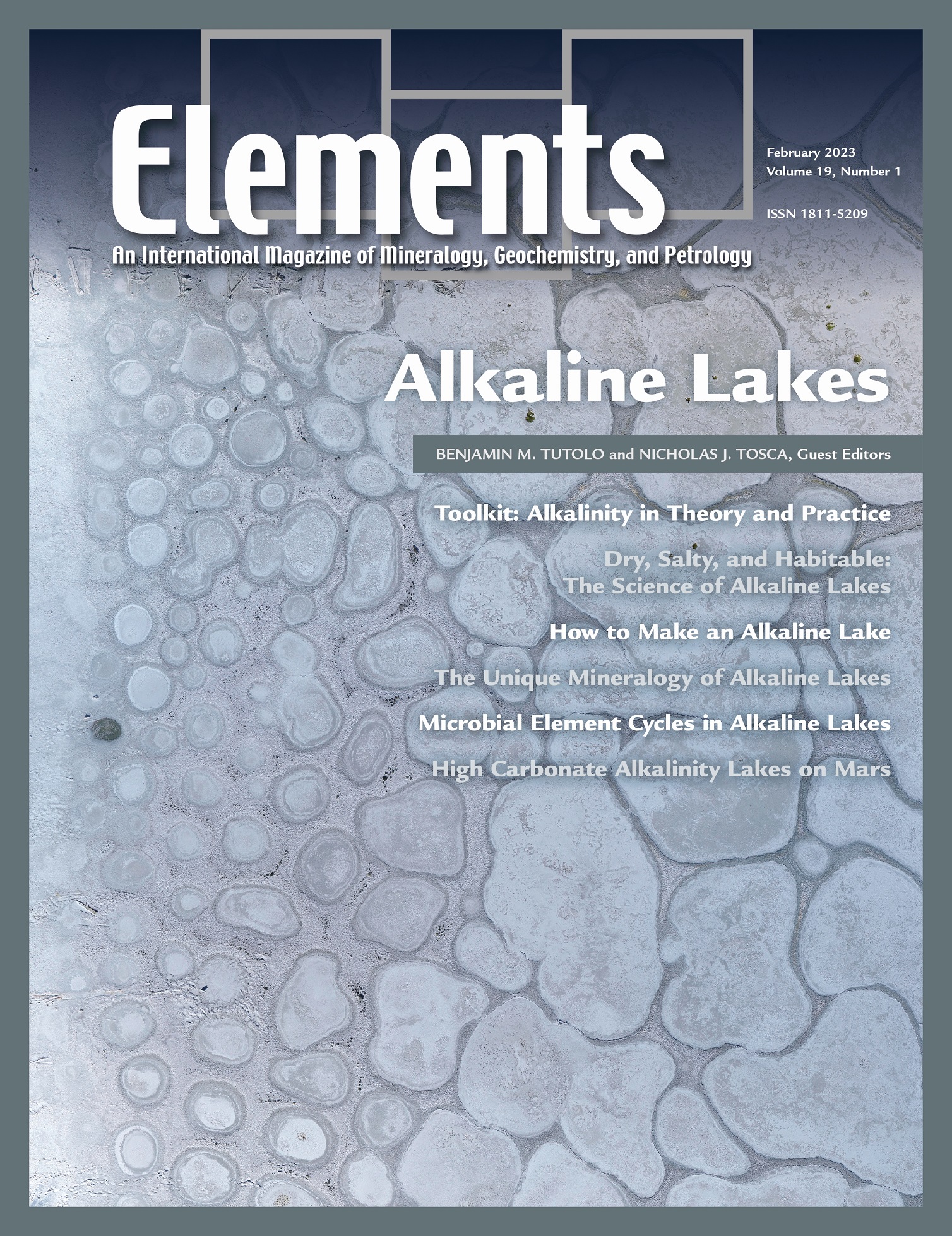
Cascadia Subduction Zone, August 2022, Vol. 18, No. 4
June 28, 2024
Biomagnetism, August 2023, Vol. 19, No. 4
June 28, 2024Alkaline Lakes, February 2023, Vol. 19, No. 1
$20.00
Alkaline lakes are incredibly dynamic, unique, and fascinating biogeochemical environments. This thematic issue leverages the authors’ multidisciplinary insights to portray alkaline lakes’ biogeochemical, mineralogical, and geological importance for both science and society.
Alkaline Lakes
February 2023, Vol. 19, No. 1
Alkaline lakes are incredibly dynamic, unique, and fascinating biogeochemical environments. This thematic issue leverages the authors’ multidisciplinary insights to portray alkaline lakes’ biogeochemical, mineralogical, and geological importance for both science and society. The articles individually explore the unique conditions leading to the formation of alkaline lakes, the distinctively productive microbial ecosystems that inhabit them, their distinguishing chemistry and mineralogy, their role as societally important economic resources, and their potential to have originated life on Earth as well as Mars. This approachable overview of the geochemical, biological, and societal aspects of alkaline lakes establishes their vital importance to the broad readership of Elements and stimulates continued explorations of these mesmerizing geological systems.
Why You’ll Love Elements Magazine:
- Expert Contributors: Articles written by renowned researchers in the field of geoscience.
- Engaging Content: Join a community of readers who are passionate about Elements.
- Exceptional Quality: Each issue is printed on high-quality paper with stunning visuals and detailed illustrations that bring complex scientific concepts to life.
Order your copy of the February 2023 issue of Elements magazine today and explore alkaline lakes.
Related products
-
Water On Mars, June 2006, Vol. 2, No. 3
$20.00During the past several decades, spacecraft data have transformed the planets from astronomical objects into geologic worlds. Mars is the current focus of planetary exploration, and NASA’s objectives for this effort are based on the theme, “follow the water.
-
Carbon Dioxide Sequestration, October 2008, Vol. 4, No. 5
$20.00Storage of carbon in the subsurface involves introduction of supercritical CO2 into rock formations beneath the surface of the Earth, typically at depths of 1000 to 4000 meters. Although CO2 is a relatively benign substance, the volume being considered is large.
-
The Nuclear Fuel Cycle – Environmental Aspects, December 2006, Vol. 2, No. 6
$20.00Increasing concerns for the effects of global warming that result from rising greenhouse gas concentrations in the atmosphere have led to a reexamination, even enthusiasm, for nuclear power. Of all the current alternatives to fossil fuels, nuclear fission is the most important source of energy, accounting for 17 percent of the world’s electricity.




